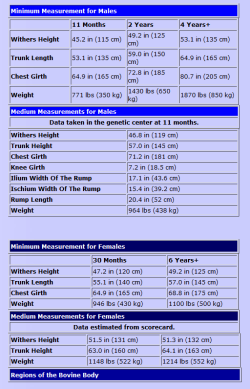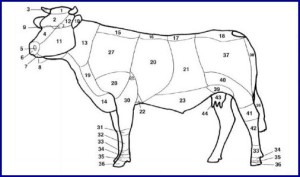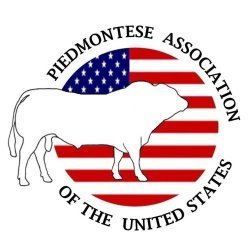Breed Standards
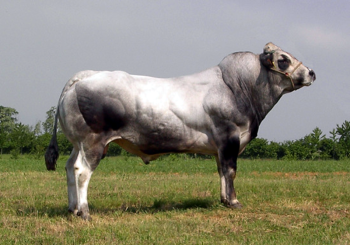
Breed Standards
The improvement of the Piedmontese bovine breed concerns basically the early maturity of the cattle; this contains the accelerated achievement of the slaughtering age, the weight increase rate, the efficiency of the food conversion, the dressing-out percentage, the characteristics of the carcass, the quality of the meat, calving ease and fertility; together with all this also the milk production is considered in the selection. Furthermore, the improvement concerns eliminating any genetic flaws.
Conformation and Type The breed has a marked aptitude for the production of meat, characterized by an adequate somatic development, it has a good daily live weight gain and a good adaptability to various environments, even in modest feeding conditions, and, finally, it has a good milk production for the breeding of the calves. A broad and muscular chest, wide withers, muscular loins, a long trunk and a good muscular development of the rump and the thighs. The carcass contains only little fat and has a low percentage of bones; the beef is of excellent quality.
Morphological Features Color Of The Skin The skin of the males is grey or light-reddish with a considerable accentuation of black hairs on the head (in particular around the eyes or orbits), on the neck, the shoulders, and on the distal regions of the limbs; sometimes also on the lateral faces of the trunk and on the hind-limbs, forming dark stains or spots. The skin of the cows is white or light- reddish and can show shades of grey or shades of reddish. The skin of the calves at birth is pale fawn.
Pigmentation The following parts are black: the muzzle, the oral mucosae (the tongue, the palate and the cheeks), the eyelashes, the edges of the eyelids and the ears, the tuft of the foreskin, the lower part of the scrotum, the tassel of the tail, the anal opening and the labia of the vulva, the hooves and the dew claws. The horns are black up to 20 months of age, but by the adult animals they are yellowish at the basis, a little lighter in the mean third of them, and black at the top. The partial depigmentation of the above-mentioned parts does not disqualify an animal.
Skin Soft, Elastic, and Thin.
Shoulders Compact, broad, muscular, well attached to the body and in the right direction.
Neck Broad, muscular and with a rather pronounced gibbosity, relatively long and less muscular by the females, a light and medium-sized dewlap.
Head Expressive, short and large by the males, long and thin by the females, the sinciput is covered with a small tuft, often of a light reddish colour, the forehead is flat and slightly low- lying between the prominent orbital arches; the ears are medium- sized, the eyes are big and show a lively expression (the iris is black); the nose is broad and straight, with wide nostrils, the muzzle is large with a wide mouth and prominent lips.
Back Wide and muscular, joint to the neck.
Loins Broad and horizontal.
Chest Muscular and full.
Thorax Broad and muscular.
Side Deep.
Abdomen Well arched, long and deep.
Flanks Full, rather long.
Rump Wide and with a good muscular development in the male, wide long and muscular in the female.
Tail Long, with an abundant tuft.
Thighs Wide and really muscular in the males, full and well-developed in the females.
Buttocks Wide and long, with a considerable muscular development in the males, long and well descending in the females.
Fore Limbs Solid, a rather short arm, a long and muscular forearm, a thick and broad knee, solid and medium-long shin, a strong hock, a short pastern, strong and shut claws.
Hind Limbs Correct line, without flaws, muscular leg, a large and strong hock, not straight and not sickled, a short pastern, strong and shut claws.
Gait Regular
Udder Regular shape, regular quarters and well-placed teats, well vascularized.
Testicles Evenly developed and descended in the scrotum.
Non-Allowed Defects
The following defects, of which only the first three can be observed at birth, involve the exclusion from registration in the herdbook.
Macroglossia
Artogryphosis (manifestation of congenital nature, characterized by bowed legs due to contracted tendons)
Total depigmentation of a mucous membrane
Atypical colour of the skin
Brachignathism
Beak
Cryptorchism
Monorchism
Scheme of the Measurements
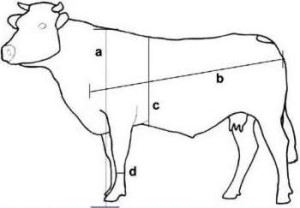
a. Withers Height: from the highest point of the withers to the ground.
b. Trunk Length : from the tip of the shoulder to the tip of the ischium.
c. Chest Measurement : measured straight behind the articulations of the elbow.
d. Knee Measurement : measured in the middle of fore limbs knee.
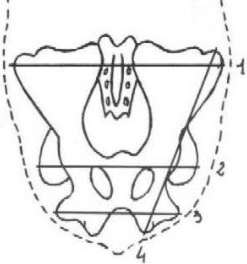
2. Illium Width of the Rump: Between the two tips of the illium (hip bones)
2. Medium Width Of The Rump : between the trochanter (coxo-femoral articulation).
3. Ischium Width Of The Rump : between the two tips of the ischium (pinbones).
4. Rump Length : between the tip of the ilium and the tip of the ischium.
![]() Click for Larger View
Click for Larger View
 Consumers select Piedmontese beef for it's nutritional benefits including lower fat and cholesterol while enjoying a product that is tender and flavorful.
Consumers select Piedmontese beef for it's nutritional benefits including lower fat and cholesterol while enjoying a product that is tender and flavorful.
